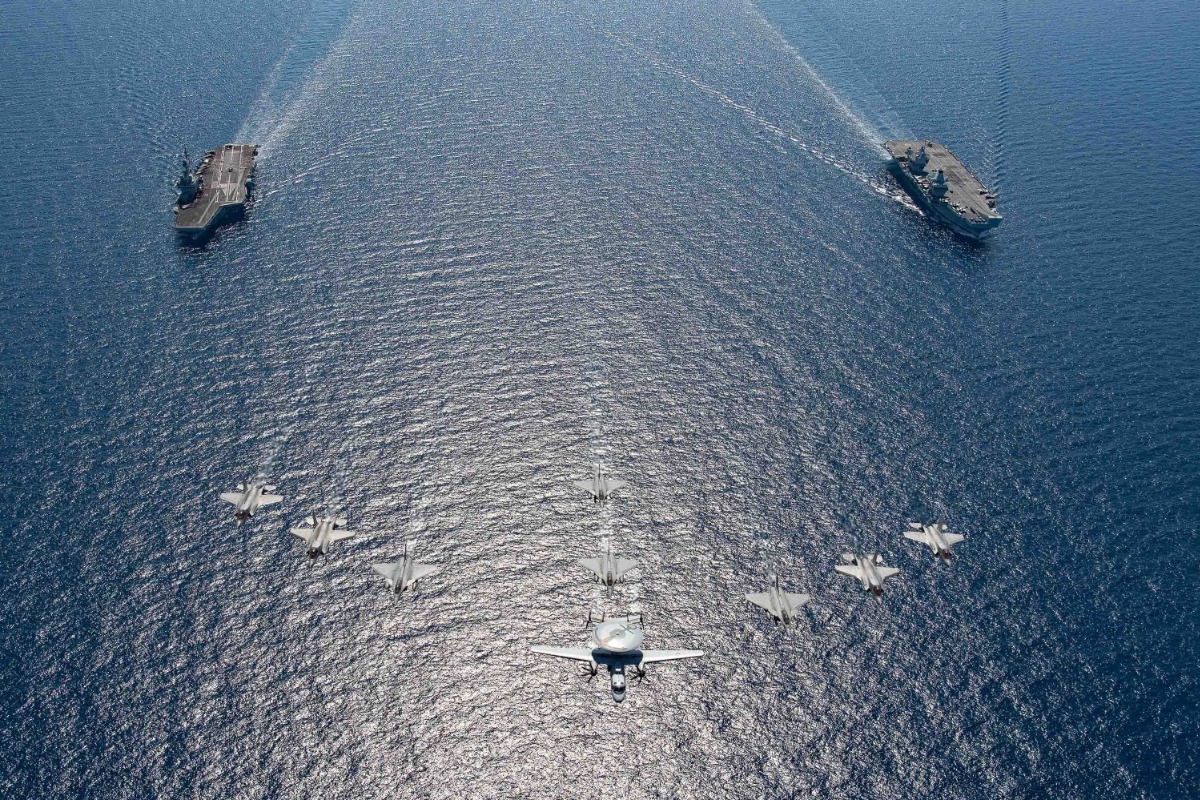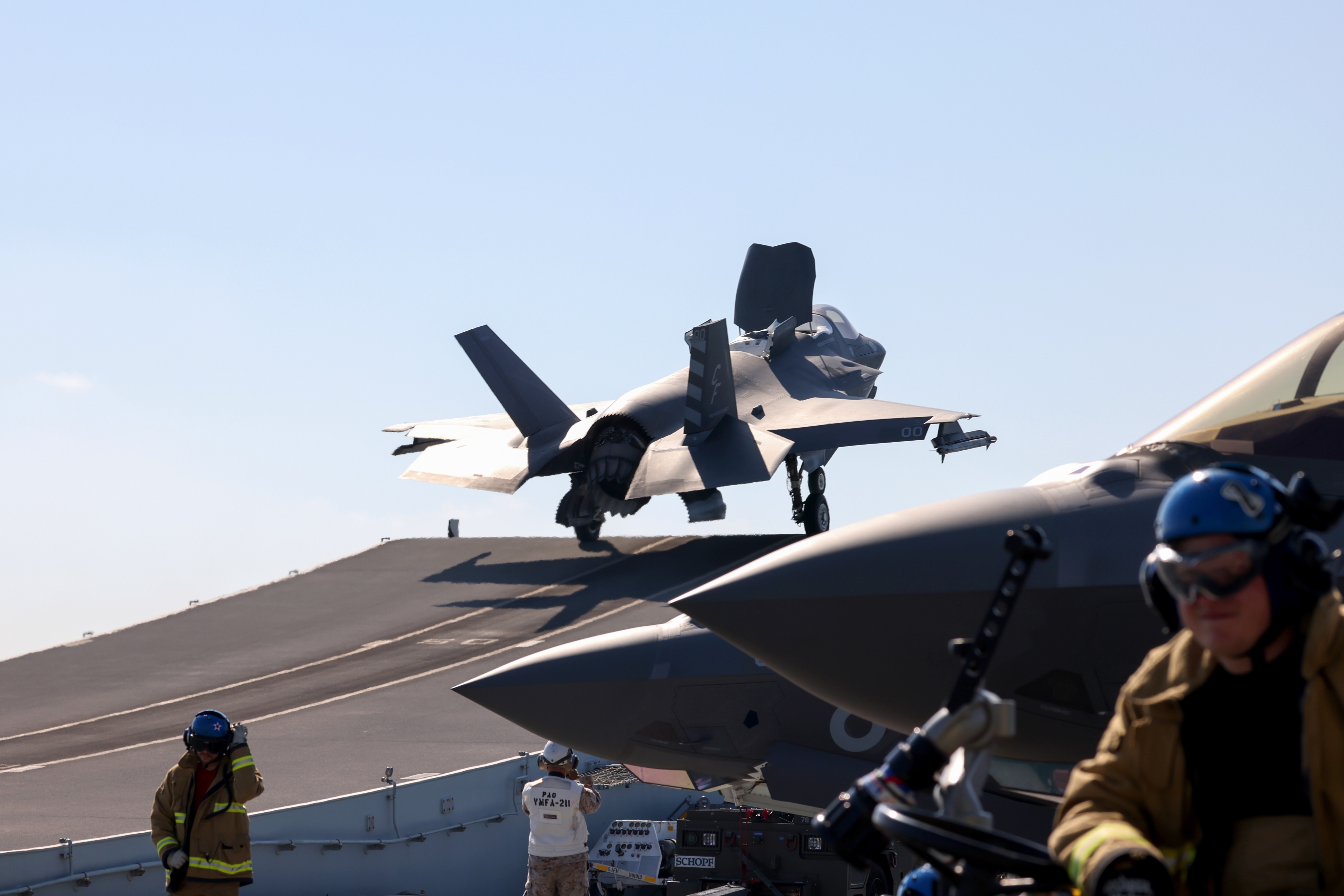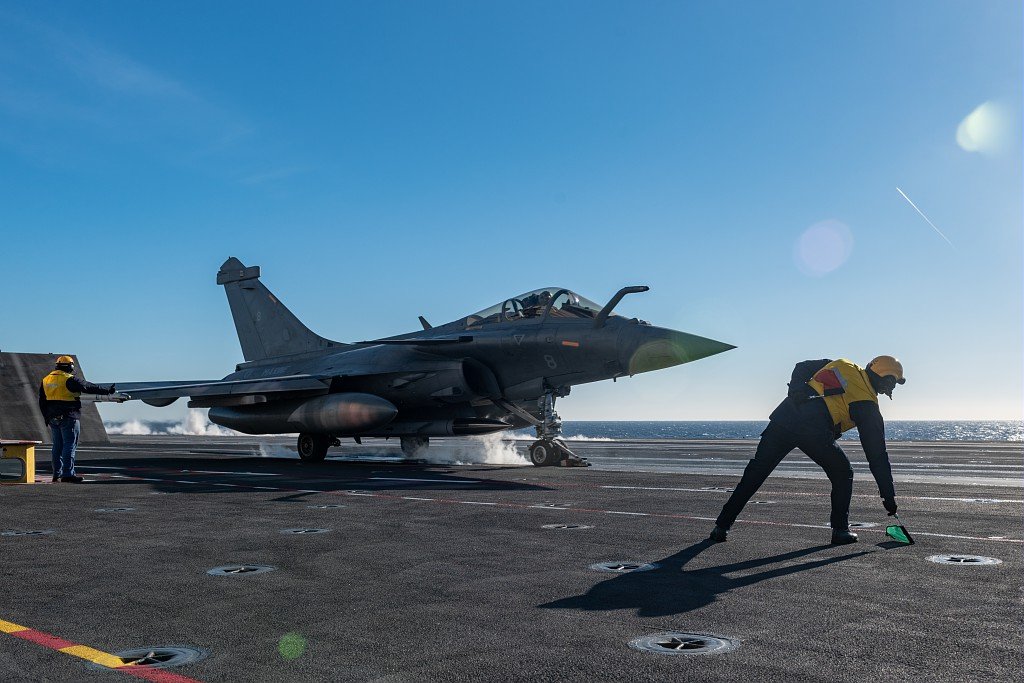The UK Royal Navy’s stealth fighter F-35B and the French Navy’s Rafale-M or Marine conducted joint drills along with their respective carriers, HMS Queen Elizabeth and Charles de Gaulle earlier this year.
Lockheed Martin’s F-35 Lightning II and Dassault Aviation’s Rafale and their respective naval variants are the most advanced and powerful fighter aircraft in the world and are being marketed to allies, partners, and friendly countries.
The carrier groups of both countries came together for a joint maritime exercise called ‘Gallic Strike’ in the Western Mediterranean Sea. These drills become significant in the face of Western interests in the Mediterranean and the Indo-Pacific region.
Both F-35B and Rafale M are among the most sought-after fighters of the world and their cooperation serves as a force multiplier for the two navies and NATO, at large.
The Gallic Strike exercise primarily focused on training for a twin carrier operation, that is, training for aircraft carriers to coordinate and battle together in a single command organization.
This sequence, which featured a sea-to-land strike simulation and joint tactical maneuvers between the naval variant of the Rafale and F-35 aircraft, allowed them to collaborate in a variety of areas, including anti-air, anti-surface warfare, and force projection.

“Allied cooperation and interoperability have reached new heights with this first meeting of the French and UK carrier strike groups at sea. These initiatives ensure crew; aircraft and ships are interoperable and able to seamlessly support one another when the need arises,” said Major General Phillip A. Stewart, Deputy Chief of Staff, Strategic Employment, Supreme Headquarters Allied Powers Europe (SHAPE) after the exercise that took place in June 2021.
Both France and the United Kingdom already cooperate as NATO members and as bilateral partners. Their militaries remain invested in the Combined Joint Expeditionary Force (CJEF) which draws numbers from the armed forces of both countries.
The Royal Navy F-35B
The HMS Queen Elizabeth carrier that led the British strike group is the largest and the most powerful vessel ever constructed for the Royal Navy.
It has been constructed to launch the American-built F-35B Lightning stealth aircraft from its deck. It is the world’s first aircraft carrier designed from scratch to operate fifth-generation combat aircraft that have been procured from the United States.
However, in an unfortunate incident, one of its F-35 fighters crashed in the Mediterranean recently. This incident comes months after the Gallic exercise and the deployment of HMS Elizabeth in the Mediterranean and IOR which followed the joint drill with its French counterpart.
According to various UK news outlets, a rain cover that was not lifted prompted the recent crash of a British F-35B during takeoff from HMS Queen Elizabeth. Officials doubt the rain cover was sucked into the stealth plane’s F-35B Lightning II engine, forcing the pilot to eject.
The HMS Queen Elizabeth Carrier group had conducted a trilateral exercise with the Indian Navy last month on its maiden deployment to the Indo-Pacific region.

The F-35B short takeoff and vertical landing (STOVL) fighter jets are used by the US Marine Corps and the UK Royal Navy. The UK has been part of Lockheed Martin’s 5th gen fighter program which also includes the Netherlands, Denmark, Australia, Norway, Italy, and other foreign buyers.
Even though initially the Royal Navy remained hinged on the carrier-specific variant F-35C, it later changed tack and settled for the F-35B variant that was designed keeping the Marines in mind.
The Queen Elizabeth carrier design best supports the STOVL variant of F-35 and hence, the Royal Air Force infrastructure was upgraded and made compatible to support and complement the fifth-gen advanced stealth fighters.
There are about 8 more UK F-35Bs along with another 10 of the US Marine F-35Bs on the HMS Elizabeth which remains in the Mediterranean, days after the crash that brought the limelight on purported technical snags of the fifth-generation fighter jet.
French Rafale M (Marine)
The Charles de Gaulle carrier that led the French Navy in the Gallic exercise is a nuclear-powered aircraft carrier that allows Rafale M, the naval variant of Dassault Aviation’s advanced multi-role fighter jet to take off from its deck.
Gallic Strike came towards the end of the French carrier’s Clemenceau 21 deployment, which took her task group into the Indian Ocean and Gulf.
The Rafale M’s ability to land with a considerable number of unfired ordnance or fuel provides it excellent flexibility of employment on board the aircraft carrier.
The Charles de Gaulle’s tactical use is similar to that of its big American cousins, due to its range of action, the safety of use (twin-engine), stability in the approach phase, and the ability to “clear” the aircraft.

Rafale M (Marine), comes equipped with the Meteor missile, robust radar, and has an enhanced Spectra electronic warfare system. In terms of weaponry, it integrates the GBU16 500kg laser-guided bomb. It features improved warning capability and strong resilience against GPS jamming.
It is a battle-proven, exceedingly capable fighter jet that can perform a wide array of tactical missions. Since the retirement of Super Etendard, the French Navy has channelized all its energy on Rafale operations, making it a highly powerful naval aircraft.
With India looking for a carrier-based twin-engine fighter, Dassault Aviation has pitched its Rafale Marine variant to the Indian Navy, as previously reported by Eurasian Times. Rafale M is competing against Boeing Super Hornets.
Rafale’s weight to power ratio and its maritime strike capabilities, along with France’s proven reliability as a strategic ally work in the favour of the French aircraft.
The Indian Navy has shown keen interest in the Rafale platform. In its quest to sell the Rafale M to the Indian Navy, Dassault is expected to fly its Rafale Marine to India in 2022 for a showcase trip.
- Contact the author at sakshi.tiwari9555@gmail.com
- Follow EurAsian Times on Google News





